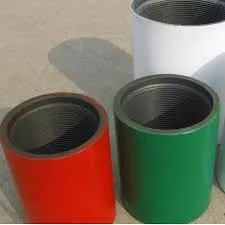- Afrikaans
- Albanian
- Amharic
- Arabic
- Armenian
- Azerbaijani
- Basque
- Belarusian
- Bengali
- Bosnian
- Bulgarian
- Catalan
- Cebuano
- Corsican
- Croatian
- Czech
- Danish
- Dutch
- English
- Esperanto
- Estonian
- Finnish
- French
- Frisian
- Galician
- Georgian
- German
- Greek
- Gujarati
- Haitian Creole
- hausa
- hawaiian
- Hebrew
- Hindi
- Miao
- Hungarian
- Icelandic
- igbo
- Indonesian
- irish
- Italian
- Japanese
- Javanese
- Kannada
- kazakh
- Khmer
- Rwandese
- Korean
- Kurdish
- Kyrgyz
- Lao
- Latin
- Latvian
- Lithuanian
- Luxembourgish
- Macedonian
- Malgashi
- Malay
- Malayalam
- Maltese
- Maori
- Marathi
- Mongolian
- Myanmar
- Nepali
- Norwegian
- Norwegian
- Occitan
- Pashto
- Persian
- Polish
- Portuguese
- Punjabi
- Romanian
- Russian
- Samoan
- Scottish Gaelic
- Serbian
- Sesotho
- Shona
- Sindhi
- Sinhala
- Slovak
- Slovenian
- Somali
- Spanish
- Sundanese
- Swahili
- Swedish
- Tagalog
- Tajik
- Tamil
- Tatar
- Telugu
- Thai
- Turkish
- Turkmen
- Ukrainian
- Urdu
- Uighur
- Uzbek
- Vietnamese
- Welsh
- Bantu
- Yiddish
- Yoruba
- Zulu
Exploring the Benefits of Steel Coupling in Modern Engineering Applications
Understanding Steel Couplings A Key Component in Mechanical Systems
Steel couplings are essential mechanical components that connect two shafts in various applications, allowing for the transfer of torque and rotational motion. Their significance cannot be overstated, as they play a vital role in various industries, including manufacturing, automotive, and aerospace. This article delves into the importance, types, and advantages of steel couplings.
What are Steel Couplings?
Steel couplings are mechanical devices designed to connect two shafts while accommodating misalignment and reducing the transmission of vibrations and shocks. Typically manufactured from high-strength steel, these couplings ensure durability and reliability in performance. Their robust construction makes them suitable for high-stress environments where performance is critical.
Types of Steel Couplings
There are several types of steel couplings, each designed for specific applications and requirements. The most common types include
1. Rigid Couplings These provide a solid connection between shafts with minimal misalignment. They are ideal for applications where precision is essential. However, they do not tolerate any angular or axial misalignment.
2. Flexible Couplings These couplings can accommodate a certain degree of misalignment between shafts. This flexibility helps reduce wear and tear on machinery and minimizes vibration, making them suitable for industrial applications.
3. Oldham Couplings These are a type of flexible coupling that allows for both angular and parallel misalignment. They consist of three parts two flanged hubs and a center disk, typically made from a softer material, which helps in dampening vibrations.
steel coupling

4. Bellows Couplings Known for their ability to handle angular misalignment and axial movement while being very rigid, bellows couplings are widely used in precision applications such as robotics and semiconductor manufacturing.
Advantages of Using Steel Couplings
1. Durability Steel couplings are highly resistant to wear and tear, ensuring a long service life and reliability in demanding environments.
2. High Torque Transmission They can efficiently transmit high levels of torque, which is crucial for heavy machinery and industrial equipment.
3. Resistance to Corrosion High-quality steel couplings often come with protective coatings or treatments that enhance their resistance to corrosion, making them suitable for use in various environmental conditions.
4. Ease of Installation and Maintenance Most steel couplings are straightforward to install and require minimal maintenance, contributing to reduced downtime in industrial operations.
Conclusion
In summary, steel couplings are integral components in numerous mechanical systems, providing the necessary connection and functionality required for reliable operation. Understanding their types and advantages can help engineers and manufacturers select the appropriate coupling for their specific applications, ultimately enhancing performance and efficiency. As technology continues to advance, the role of steel couplings will undoubtedly become even more critical in meeting the demands of modern machinery and equipment.
-
Tubing Pup Joints: Essential Components for Oil and Gas OperationsNewsJul.10,2025
-
Pup Joints: Essential Components for Reliable Drilling OperationsNewsJul.10,2025
-
Pipe Couplings: Connecting Your World EfficientlyNewsJul.10,2025
-
Mastering Oilfield Operations with Quality Tubing and CasingNewsJul.10,2025
-
High-Quality Casing Couplings for Every NeedNewsJul.10,2025
-
Boost Your Drilling Efficiency with Premium Crossover Tools & Seating NipplesNewsJul.10,2025







